 July 21, 2007
July 21, 2007
Channel NewsAsia 19 Jul 07
SINGAPORE: You may think that Singapore lacks biodiversity, but the latest collaboration between National Parks Board and an international pharmaceutical company may just prove you wrong.
Drug discovery company MerLion Pharmaceuticals and National Parks Board have inked an agreement to tap into Singapore’s diverse plants, animals and micro-organisms.
The company will collect samples from here to support drug discovery that’s based on natural products.
Singapore is one of many stops the company collects samples from.
The move will boost MerLion’s library, which now contains more than 100,000 micro-organisms. Royalties from any successfully produced drug will also come back to Singapore. –  Posted in Uncategorized
Posted in Uncategorized  No Comments »
No Comments »
 July 4, 2007
July 4, 2007
 Though just 40 minutes from the mainland, Pulau Hantu is proving to be quite the idyllic island getaway for lovers.. that is if you’re a shrimp.
Though just 40 minutes from the mainland, Pulau Hantu is proving to be quite the idyllic island getaway for lovers.. that is if you’re a shrimp.
In your private and gorgeous anemone, anything can happen! Swing by the Budak Blog for a peek into the secret and naughty life of a little shrimp in the sea.
 Posted in Uncategorized
Posted in Uncategorized  No Comments »
No Comments »
 July 2, 2007
July 2, 2007

The Wildfilms crew visited Hantu islands intertidal over the weekend and uncovered a remarkable find of Mushroom Corals amongst other things.
How many kinds of underwater fungi can you find at Hantu? Bedazzled with the answer at the Wildfilms Blog.
 Posted in Uncategorized
Posted in Uncategorized  No Comments »
No Comments »
 June 18, 2007
June 18, 2007
 A nice coral head
A nice coral head
Last Sunday wasn’t too good a day for being outdoors. As you all might know, we had torrential rains almost all of last week, which probably accounted for the disappointing or rather, challenging visibility conditions at the island.
 A phyllidia sea slug
A phyllidia sea slug
To add to that, we thought that as we moved out of the marina, that the weather might clear up as we headed out to sea, but for some reason the clouds over Telok Blangah looked far brighter than they were looking Southwards! So we braced ourselves for a cool dive in warmer waters, because the strong winds that swept across the sea was absolutely chilling!
 The day’s first flabellina
The day’s first flabellina
We managed to pull into our first dive site with few problems and one of our divers clocked a dive time of 60 minutes as she drifted along the fringing reefs and spotting a Juvenile Sweetlips along the way!
 A colony of sponges
A colony of sponges
Usually after our 1st dive, we’d anchor up at the 2nd dive site as we sit through out surface interval and chow down our lunch. But today, strong winds made that regular task very challenging. So we took refuge by docking at the Big Island jetty, and took a walk on the island, checking out its lagoon and mangrove. Despite the gloomy weather, the island still burst with tranquil bird songs.
 Some sponges take on wacky shapes
Some sponges take on wacky shapes
Though the weather had worsened, the 2nd dive proved to me far more encouraging!
 A seemingly innocuous-looking hydriod
A seemingly innocuous-looking hydriod
Tons of fish took to schooling near the surface during the storm, and the wonderful sea whips and corals had all their tentacles out to take advantage of the increasing current.
 Gloomy skies, rain, wind, and waves
Gloomy skies, rain, wind, and waves
ReefXplore guide and Hantu Blog volunteer Marcel, managed to turn out 2 seahorses and an eel during the second dive.
 Trees swayed in the wind, as our boat did on the surface!
Trees swayed in the wind, as our boat did on the surface!
It’s been awhile since we dived at Hantu in the midst of a storm. It was refreshing albeit more challenging, as sometimes it necessary to be reminded that nature doesn’t always comply to our needs or wants, and that sometimes a change, even if for the worse, is good. It was all part of the experience of being outdoors – the choppy sea definately looked impressive and the rain made the day a whole lot cooler.
 The jetty in the storm
The jetty in the storm
The rest of the pix are for your viewing pleasure! As with most low vis times, it a good opportunity to look out for interesting coral instead of the usual hunt for queer fish!
 An unusually-shaped neptune’s cup (barrel sponge)
An unusually-shaped neptune’s cup (barrel sponge)
 Whips favour sites with strong currents
Whips favour sites with strong currents
 A young sea fan
A young sea fan
 More whips reaching out into the current
More whips reaching out into the current
 A huge sea slug! Compare it to the size of the coral-encrusted glass bottle its resting upon!
A huge sea slug! Compare it to the size of the coral-encrusted glass bottle its resting upon!
 A young crinoid (feather star) seeks cover in a crevice
A young crinoid (feather star) seeks cover in a crevice
 Tube worms
Tube worms
 A young soft coral colony
A young soft coral colony
 Various corals growing together
Various corals growing together
 A red swimmer crab scavenges on a tusk fish
A red swimmer crab scavenges on a tusk fish
 A closer look
A closer look
 Flabellina
Flabellina
 The Tan and White cowry is often found in association with red encrusting sponges.
The Tan and White cowry is often found in association with red encrusting sponges.
 Red and Blue algae
Red and Blue algae
 Whiptail
Whiptail
 Whiptail
Whiptail
 Coral
Coral
 Coral
Coral
 Seafan
Seafan
 Posted in Uncategorized
Posted in Uncategorized  No Comments »
No Comments »
 June 7, 2007
June 7, 2007
White Manta Diving, a local dive operator will be conducting an “Adopt-a-fish” program over the weekend in areas that include the Johor Marine Park and the Anambas archipelago.
For an adoption fee of between $18-$90, tourists can release a frogfish, a pair of seahorses or a pair of mandarinfish into reefs close to the dive sites at which they operate.
According to the operator, the fishes in question have either been “donated by marine aquarists” or “liberated from aquarium shops”. It is not certain what their origin is, apart from the fact that they are from the “Indo-Pacific region“.
As a tourist/diver, here are 7 simple questions you should ask before participating in such an activity:
1. What is the objective of such a venture? e.g. Research experiment, marketing gimmick, welfare objective (i.e. setting wild animals free), event promotion (e.g. Earth Day, Environment Day, World Animal Day, Vesak Day etc.)
2. How sustainable and appropriate is the activity with regards to the objective? Can the adopted animals be monitored and with what methods and frequency? Are the methods credible? Is there a resident scientist involved? What are the impacts of releasing non-native species into new reefs? Who are the people that will conduct the follow up surveys?
3. What is the origin of the animals and what method was used to collect them? 95% of all marine ornamental fish are derived from the wild. Where these methods sustainable and socially and environmentally responsible?
4. What is the source of the animals? Which aquarium/s were they from? Are they environmentally and socially responsible companies? Have they traded in endangered species? Why are animals that could be sold for profit being released into the wild?
5. What is the agenda of the organisers and the donors? e.g. Profit making? Conservation? Pioneering study? Education?
6. How are the funds being used and generated? Are the uses of the funds publicly known/transparent? e.g. Educational projects, Donated to an NGO or marine research fund, Awareness campaigns, Profit
7. What is your objective in participating in such an activity? Is this a feel-good experience? Are you in support of the organisers objectives? For a chance to see these rare animals up close? Are you just doing this because its part of your holiday package?
The Hantu Blog urges all divers and marine tourists to be responsible and educated about the choices they make. If we seek pleasure from this amazing marine environment, it is crucial that our choices play a part in ensuring its sustainability for our future enjoyment and that of others.
Further reading:
Global Invasive Species Database
IUCN Invasive Species Specialist Group
Invasive Species Weblog
Invasive Species on the Conservation Science Institute
 Posted in Uncategorized
Posted in Uncategorized  No Comments »
No Comments »
 May 31, 2007
May 31, 2007
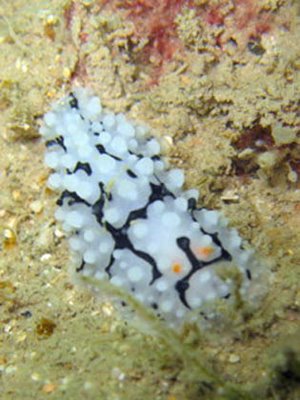 Despite the recent spade of torrential rains, the skies cleared up for us last Sunday. We set out on our bum boat to Hantu Island. We were informed that morning that boat prices will increase in July, which might affect the cost of our dives when July comes, so please be alert to the possibility of revised pricing. We began the day with a commonly spotted Phyllidia sea slug. This was a rather small individual and had a lovely pair of rhinophores which it retracted when it sensed that I was getting close.
Despite the recent spade of torrential rains, the skies cleared up for us last Sunday. We set out on our bum boat to Hantu Island. We were informed that morning that boat prices will increase in July, which might affect the cost of our dives when July comes, so please be alert to the possibility of revised pricing. We began the day with a commonly spotted Phyllidia sea slug. This was a rather small individual and had a lovely pair of rhinophores which it retracted when it sensed that I was getting close.
 Copper banded Butterflyfish are one of the most conspicuous fishes on our reef. They are also great for photography as they seem rather comfortably with cameras and flashes as long as you approach cautiously. I like to compare them with the Black-naped Orioles that we find on the mainland – beautiful and highly visible.
Copper banded Butterflyfish are one of the most conspicuous fishes on our reef. They are also great for photography as they seem rather comfortably with cameras and flashes as long as you approach cautiously. I like to compare them with the Black-naped Orioles that we find on the mainland – beautiful and highly visible.
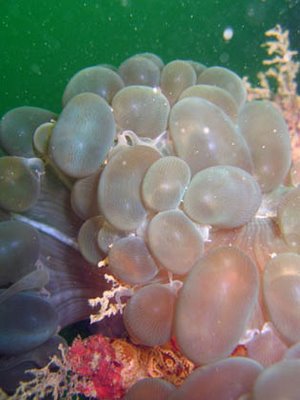 Bubble coral
Bubble coral
 This juvenile Flabellina was photographed creeping along the edges of a small barrel sponge. Looking rather pain and simple, not even very colourful like other sea slugs, the Flabellia is actually a solar powered creature. Also known as the Blue Dragon, it swallows microscopic plants called zooxanthellae whilst feeding on hydriods. Within the nudibranch, the plants use the sun’s energy to produce sugars, passing on a considerable portion to the nudibranch for its own use. This nudibranch can also inflict a sting by using the hydriods untriggered stinging cells in its body.
This juvenile Flabellina was photographed creeping along the edges of a small barrel sponge. Looking rather pain and simple, not even very colourful like other sea slugs, the Flabellia is actually a solar powered creature. Also known as the Blue Dragon, it swallows microscopic plants called zooxanthellae whilst feeding on hydriods. Within the nudibranch, the plants use the sun’s energy to produce sugars, passing on a considerable portion to the nudibranch for its own use. This nudibranch can also inflict a sting by using the hydriods untriggered stinging cells in its body.
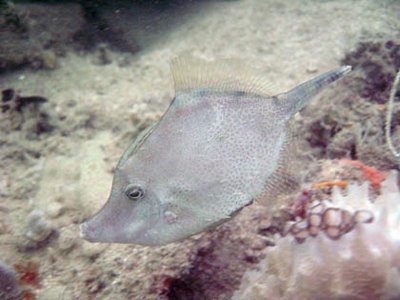 There were loads of filefish (aka. leatherjackets) out this weekend. Alot of them were quite busy feeding so weren’t too bothered by all the photos we were taking. While we usually see small ones about 5-6cm in length, most of Sunday’s sightings seemed almost palm-sized! Some species of filefish and grow up to a meter in length.
There were loads of filefish (aka. leatherjackets) out this weekend. Alot of them were quite busy feeding so weren’t too bothered by all the photos we were taking. While we usually see small ones about 5-6cm in length, most of Sunday’s sightings seemed almost palm-sized! Some species of filefish and grow up to a meter in length.
 Pretty sea fans – these can be quite a challenge to photograph during low visibility days, so I took clever advantage of the opportunity!
Pretty sea fans – these can be quite a challenge to photograph during low visibility days, so I took clever advantage of the opportunity!
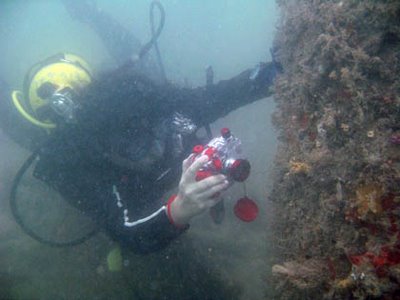 There were many photo-taking opportunities for everyone! Just as well, there were alot of cameras on the reef that day!
There were many photo-taking opportunities for everyone! Just as well, there were alot of cameras on the reef that day!
 A cuttlefish makes a run for it after its cover was blown!
A cuttlefish makes a run for it after its cover was blown!
 More coral whips in the deep…
More coral whips in the deep…
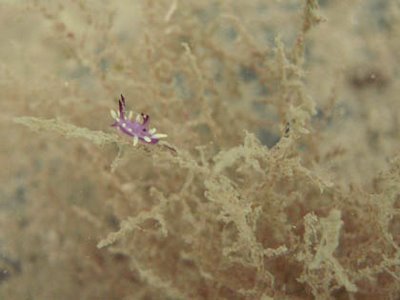 A teeny-tiny nudibranch on a mess of algae. It was only a few millimeters long!
A teeny-tiny nudibranch on a mess of algae. It was only a few millimeters long!
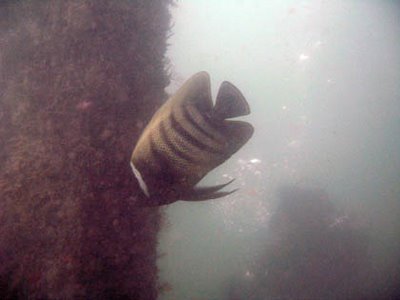 As large a size as they were, the Six banded Angelfish seemed less excited to meet us than we were to see them…
As large a size as they were, the Six banded Angelfish seemed less excited to meet us than we were to see them…
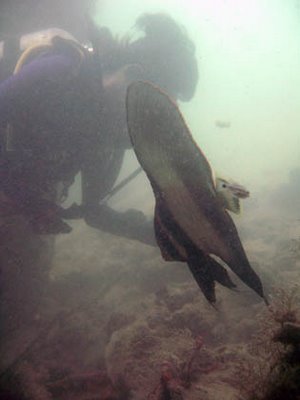
 What a pleasant treat! A juvenile batfish! It wasn’t too fond of being photographed and often turned its back to the cameras or swam into holes and crevices to evade us.
What a pleasant treat! A juvenile batfish! It wasn’t too fond of being photographed and often turned its back to the cameras or swam into holes and crevices to evade us.
 Employing extremely good camouflage, this Tigertail seahorse would never have been spotted if not for Hui Bing‘s unparalleled keen sense of sight and patience!
Employing extremely good camouflage, this Tigertail seahorse would never have been spotted if not for Hui Bing‘s unparalleled keen sense of sight and patience!
<
br /> Rabbitfish were much sought after on Sunday as one of the Hantu Blog’s dive guides, Marco Perrig from Switzerland, has been encouraging everyone to take as many pictures of Rabbitfish as they can as part of his postgraduate project. If you have pix of Rabbitfish and would like to contribute to his research efforts, please email us!
Rabbitfish were much sought after on Sunday as one of the Hantu Blog’s dive guides, Marco Perrig from Switzerland, has been encouraging everyone to take as many pictures of Rabbitfish as they can as part of his postgraduate project. If you have pix of Rabbitfish and would like to contribute to his research efforts, please email us!

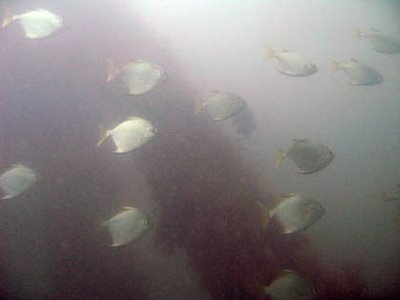 A gorgeous school of silver moonies – They are always magical to watch, silently circling the shallow waters.
A gorgeous school of silver moonies – They are always magical to watch, silently circling the shallow waters.
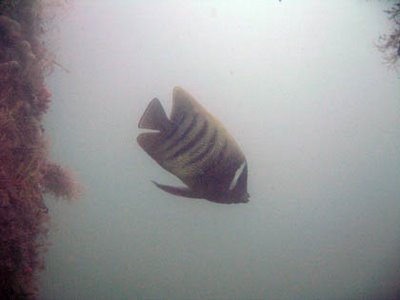 One of the 3 Six banded Angelfish cruising by again…
One of the 3 Six banded Angelfish cruising by again…
 Icon seastar
Icon seastar
 The soft and elongated polyps of the Goniopora coral can make the colony appear about 4-5 times larger! Pretty to look at but nasty to touch, they have a mean sting that may take a few weeks to recover from. I speak with experience!
The soft and elongated polyps of the Goniopora coral can make the colony appear about 4-5 times larger! Pretty to look at but nasty to touch, they have a mean sting that may take a few weeks to recover from. I speak with experience!
 Pseudoceros flatworm
Pseudoceros flatworm
 Platygyra is a boulder or massive coral that can be identified by its merged and elongated, wavy walls.
Platygyra is a boulder or massive coral that can be identified by its merged and elongated, wavy walls.
 A goby fish?
A goby fish?
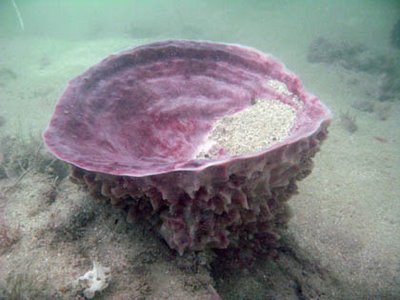
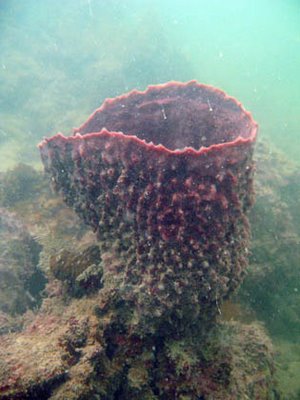 HUGE and very conspicuous barrel sponges (aka. Naptunes cup) surely give the reef a burst of colour!
HUGE and very conspicuous barrel sponges (aka. Naptunes cup) surely give the reef a burst of colour!
 A little wrasse
A little wrasse
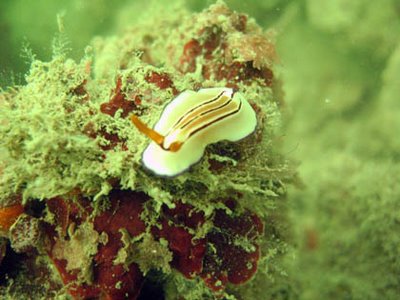 Summing up the day’s diving just before ascending, this brightly coloured Hypselodoris nudibranch popped into my view and I had to stop my ascent just to photograph it! It feeds on algae and is fond of shallow rubble bottoms… just what Hantu has!
Summing up the day’s diving just before ascending, this brightly coloured Hypselodoris nudibranch popped into my view and I had to stop my ascent just to photograph it! It feeds on algae and is fond of shallow rubble bottoms… just what Hantu has!
All of us saw more than what we could’ve asked for during this day’s dive at Hantu. Continue to swing in during the week to see what other treasures were sighted in Hantu by our divers and reef guides!
 Posted in Uncategorized
Posted in Uncategorized  No Comments »
No Comments »
 July 21, 2007
July 21, 2007  Posted in Uncategorized
Posted in Uncategorized  No Comments »
No Comments » 





























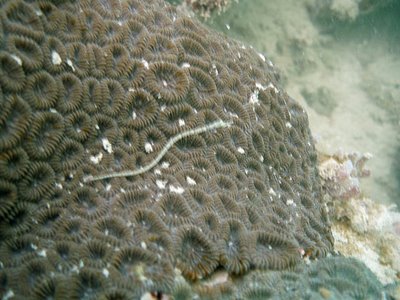

































 content rss
content rss
COMMENTS